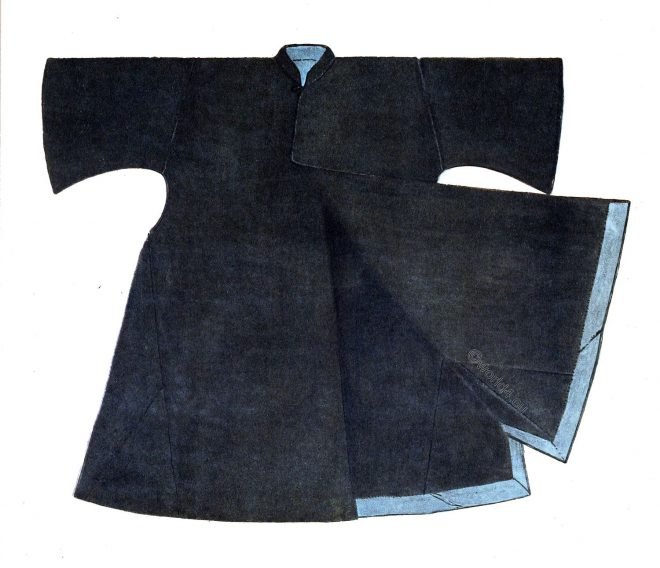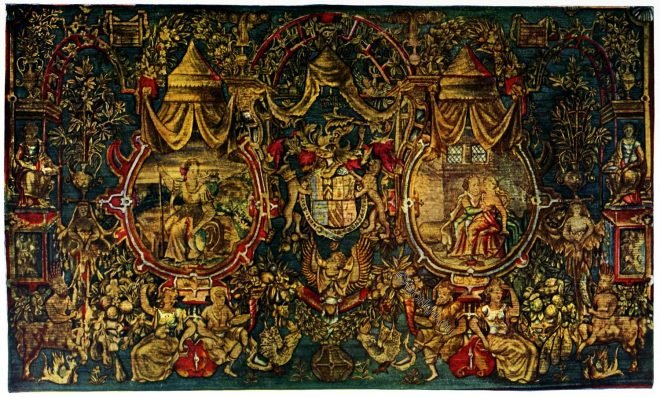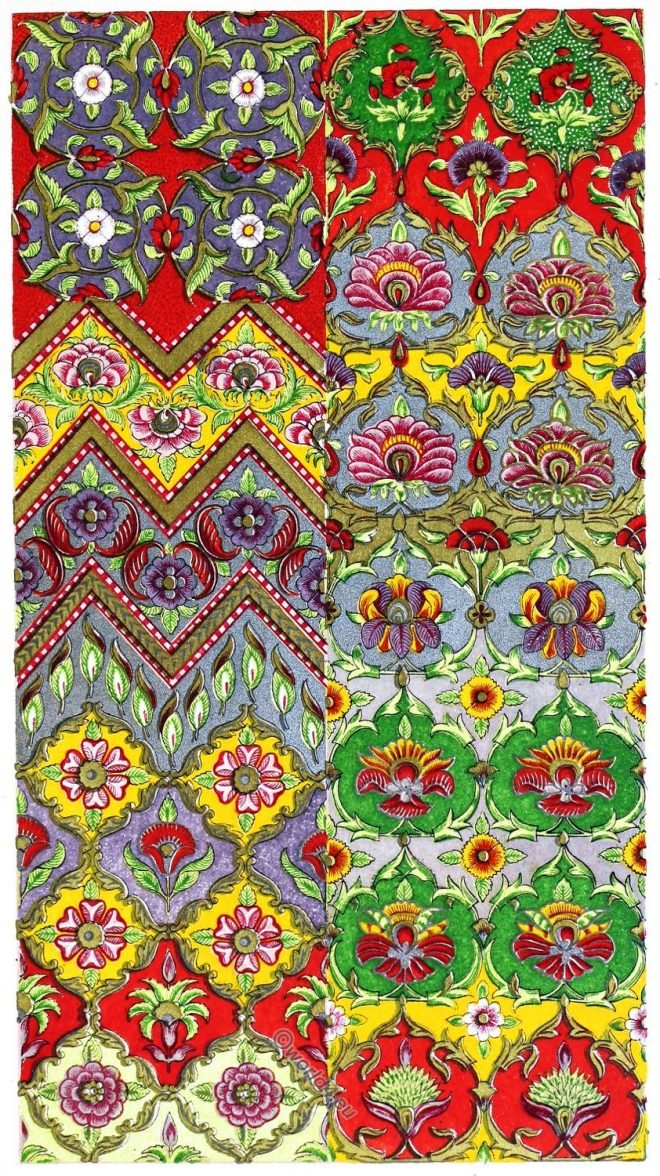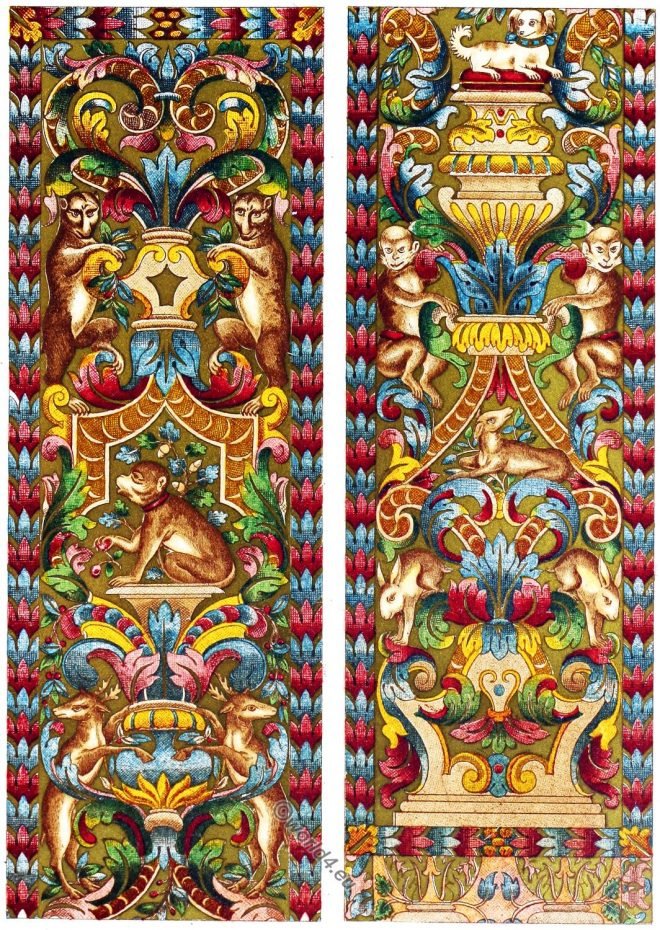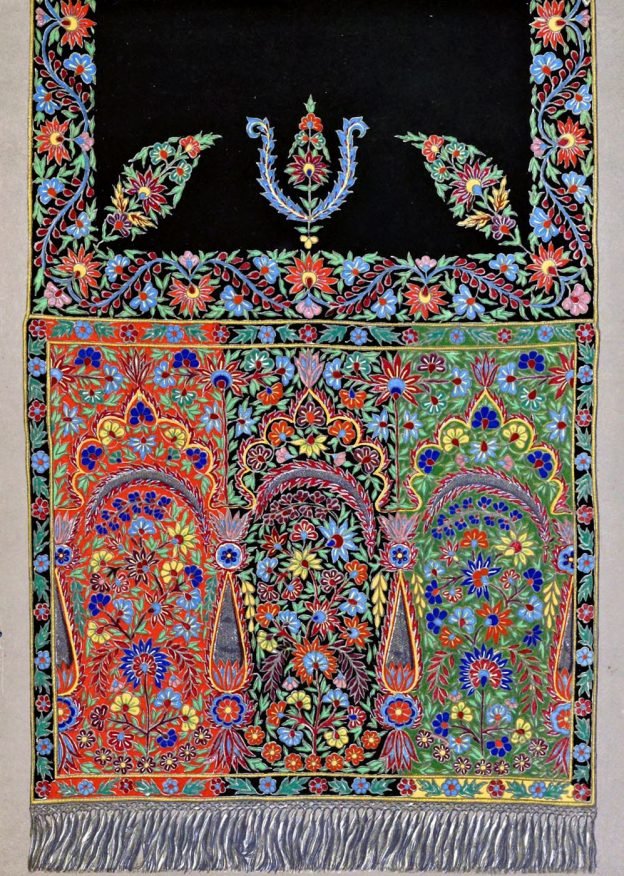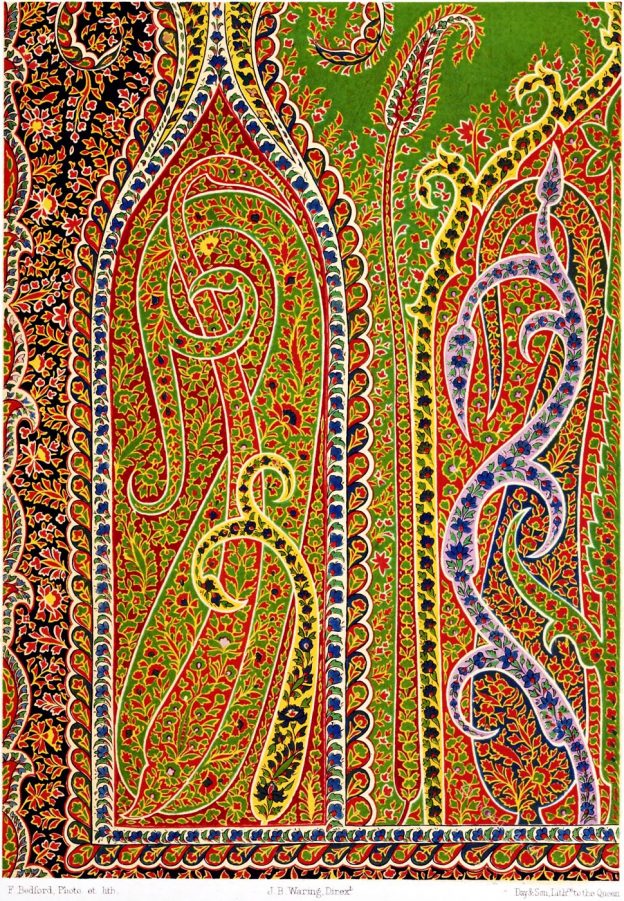The fabrics here illustrated show two styles of artistic treatment.
Tag: Textile design
Egyptian overcoat. The Binish. Upper garment of scholars and priests.
The binish, like the kaftan, is spread all over the Near East. Those countries where it is chiefly worn are Egypt, W. Arabia, Syria, Asia Minor, and Turkey.
Textiles and Embroidery during the Tudor and Stuart Periods.
Art in England during the Elizabethan and Stuart Periods. Textiles and Embroidery by Aymer Vallance.
The “Pembroke” tapestry. Tapestry weaving in England. Tudor 16th c.
The “Pembroke” tapestry at V&A Museum, contains the armorial bearings of Sir William Herbert, 1st Earl of Pembroke in the style known as “grotesque”.
Sheet of designs for textile fabrics of a persian designer.
Oriental art. Sheet of designs for textile fabrics, reproduced from the pattern-book of a persian designer.
Wall Papers, designed by Walter Crane, 1918.
Fig and Peacock. Golden Age. Wood Notes.
Italian embroidered silk hangings. The treasury of ornamental art. 16th c.
THIS engraving shows the upper and lower portions of a vertical panel, supposed to have originally formed a pilaster or border to a piece of tapestry.
Indian embroidered satin stuff for dresses. Treasury of ornamental art.
The treasury of ornamental art. Specimen embroidered satin. Manufactured at Kachchh (Cutch), Gujarat in India.
Textil Art from India. Embroidered Bobinet Scarf, 19th c.
Embroidered Bobinet Scarf from Delphi, India. Art treasures of the United Kingdom from the Art Treasures Exhibition 1858.
Textil Art from India. Design for a shawl.
Fac-simile of a portion of a native Indian drawing. Design for a shawl.


